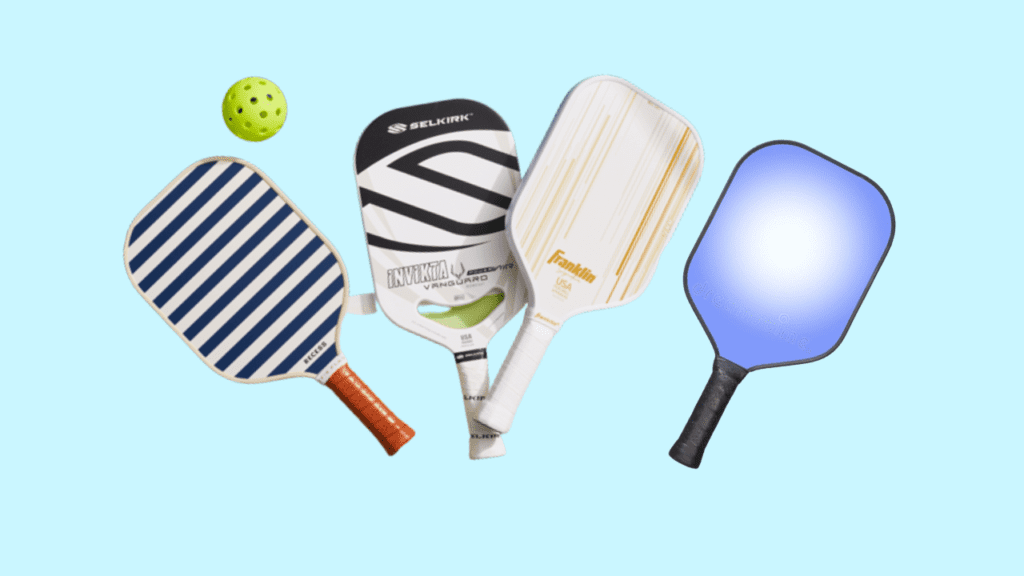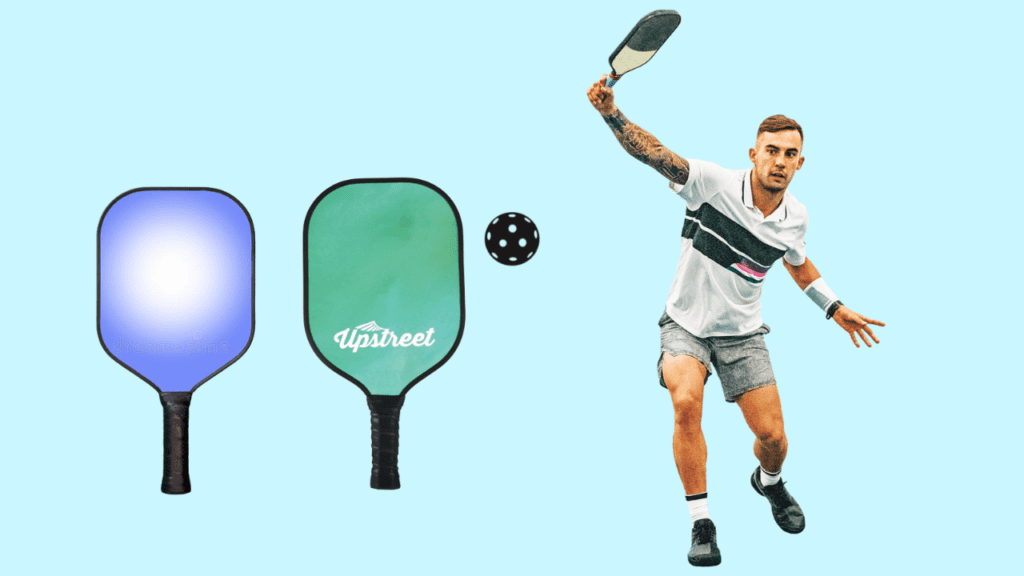Pickleball is a fun and exciting sport that is gaining popularity worldwide. It is a game enjoyed by people of all ages, and it’s a great way to stay active and healthy. However, one question that often arises is, How long does a Pickleball paddle last?
Various factors, including the type of paddle, the frequency of use, and maintenance practices, determine the lifespan of a pickleball paddle. In this article, we will explore all the factors that affect the lifespan of a pickleball paddle and provide tips on maintaining your paddle to extend its lifespan.

Types of Pickleball Paddles:
Before we dive into the factors that affect the lifespan of a pickleball paddle, it’s essential to understand the different types of paddles available in the market. There are mainly three types of pickleball paddles:
Wood Paddles: These are the most affordable type of pickleball paddles and are suitable for beginners. Composite or graphite paddles outlast them in durability, requiring more frequent replacement.
Composite Paddles: These paddles are made of a mixture of materials like fiberglass and polymer, making them more durable than wood paddles. They are also lighter and have a larger sweet spot, making them a popular choice for intermediate players.
Graphite Paddles: These paddles are the most expensive but offer the best performance. They are incredibly lightweight and have a large sweet spot, making them a popular choice for professional players.
Factors That Affect the Lifespan of a Pickleball Paddle:
Now that we have discussed the different types of pickleball paddles, let’s explore the factors that affect the lifespan of a pickleball paddle.
Frequency of Use: The more you use your pickleball paddle, the faster it will wear out. If you play pickleball frequently, you may need to replace your Racket every six months to a year.
Type of Surface: The type of surface you play on can also affect the lifespan of your pickleball paddle. Playing on hard surfaces like concrete can cause more wear and tear to your paddle than playing on softer surfaces like a gym floor.
Climate: Extreme temperatures can also affect the lifespan of your pickleball Racket. Paddles exposed to high heat or cold temperatures can warp or crack, reducing lifespan.
Maintenance: Proper maintenance is crucial in extending the lifespan of your pickleball Racket. Neglecting to clean and store your paddle properly can cause it to wear out faster.
How to Maintain Your Pickleball Paddle:
Now that we have discussed the factors that affect the lifespan of your pickleball paddle let’s explore how you can maintain your paddle to extend its lifespan.
Clean Your Paddle: After each game, wipe down your paddle with a damp cloth to remove dirt or debris. This will prevent the buildup of dirt and grime, which can cause the paddle to wear out faster.
Store Your Paddle Properly: Store your paddle in a cool, dry place away from direct sunlight.
Protect Your Paddle: Use a paddle cover to protect your paddle from scratches and other damage when not in use or during transport.
Avoid Extreme Temperatures: Avoid exposing your paddle to extreme temperatures, including high heat or cold, as it can cause warping or cracking.
Replace the Grip: The grip of your paddle can wear out over time, causing the handle to become slippery. Consider replacing the grip of your paddle every few months to ensure a secure grip.
Check for Damage: Regularly check your paddle for signs of damage, such as cracks, dents, or chips. If you notice any damage, consider replacing your paddle to avoid further damage or injury.

Signs That Your Pickleball Paddle Needs to be Replaced:
You will eventually need to replace your pickleball racket, no matter how well you maintain it. Here are some signs that it’s time to replace your paddle:
Cracks or Chips: If your paddle has cracks or chips, it’s time to replace it. These can affect the performance of your paddle and increase the risk of injury.
Warping: If your paddle has warped or bent out of shape, it’s time to replace it. Warping can affect the balance and performance of your paddle.
Reduced Performance: If you notice a decrease in the power or accuracy of your shots, it may be time to replace your paddle.
Worn Grip: If the grip of your paddle has worn out, it’s time to replace it. A slippery grip can affect your ability to hold the paddle and reduce your control over your shots.
FAQs
How often should I replace my pickleball paddle?
The lifespan of a pickleball paddle depends on various factors, including the type of paddle, the frequency of use, and how well it is maintained. Generally, pickleball players replace their paddles every six months to a year.
Can I repair a cracked pickleball paddle?
Reproducing a cracked pickleball paddle is not recommended as it can affect the performance and safety of the Racket. It’s better to replace the paddle to ensure maximum performance and safety.
Can I use my pickleball paddle in the rain?
It’s not recommended to use your pickleball paddle in the rain or any wet conditions as it can damage the paddle and affect its performance.
Conclusion
In conclusion of How long does a Pickleball paddle last, the lifespan of a pickleball paddle depends on various factors, including the type of paddle, frequency of use, and how well it is maintained. Proper maintenance, including cleaning, storing, and protecting your paddle, can extend its lifespan. However, every paddle will eventually wear out and need to be replaced. Keep an eye out for signs of damage, and replace your paddle when necessary to ensure maximum performance and safety on the court.




